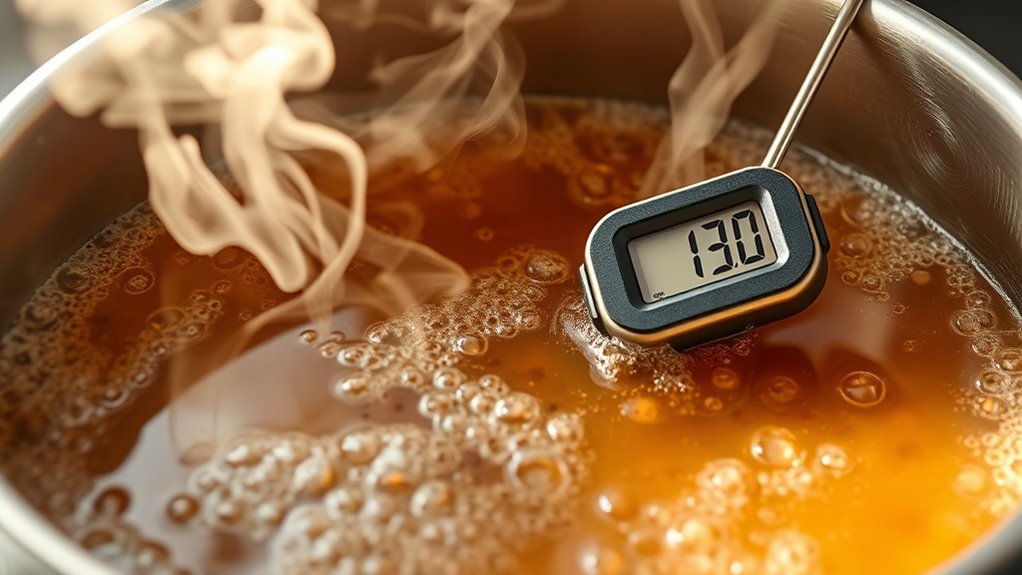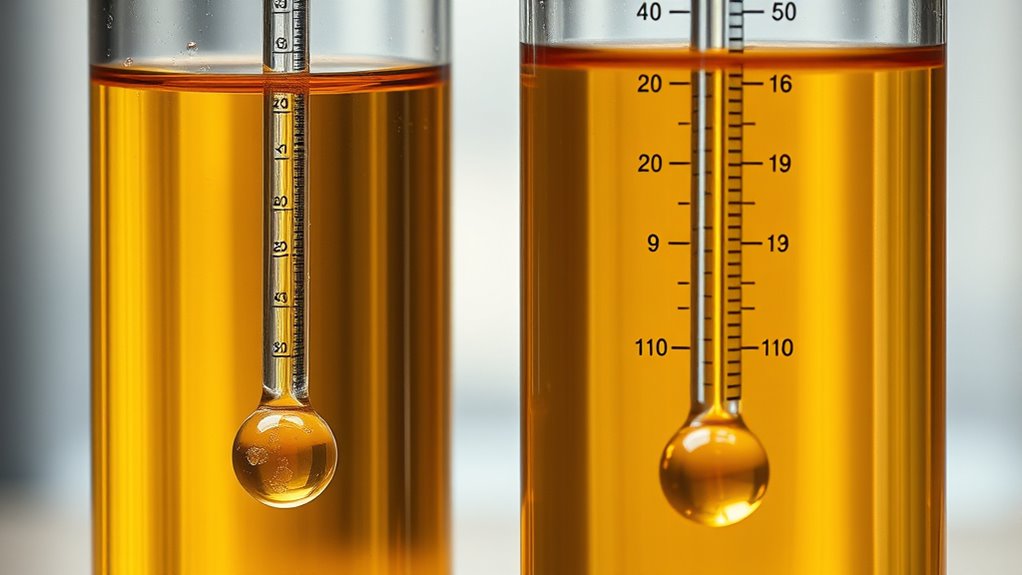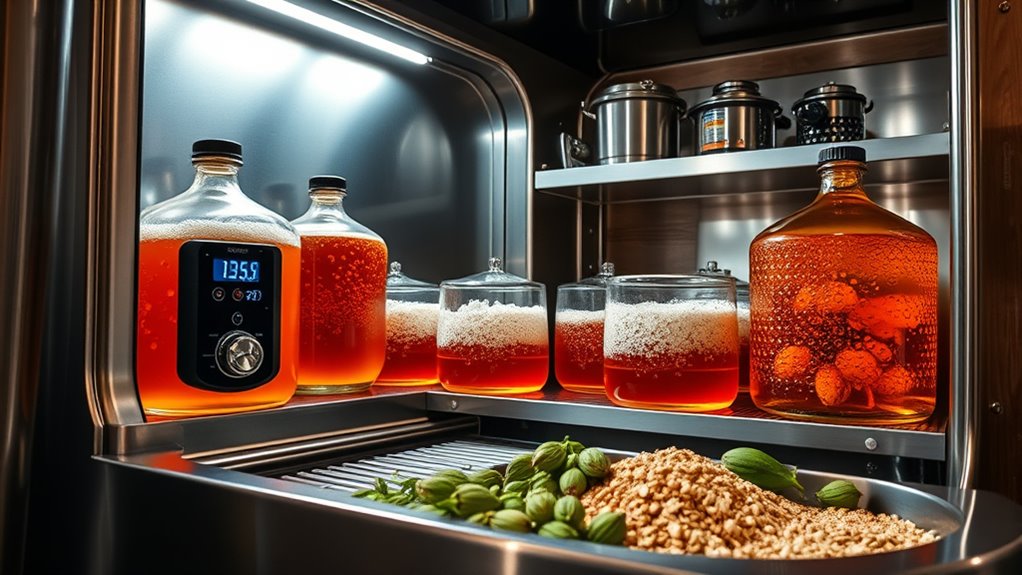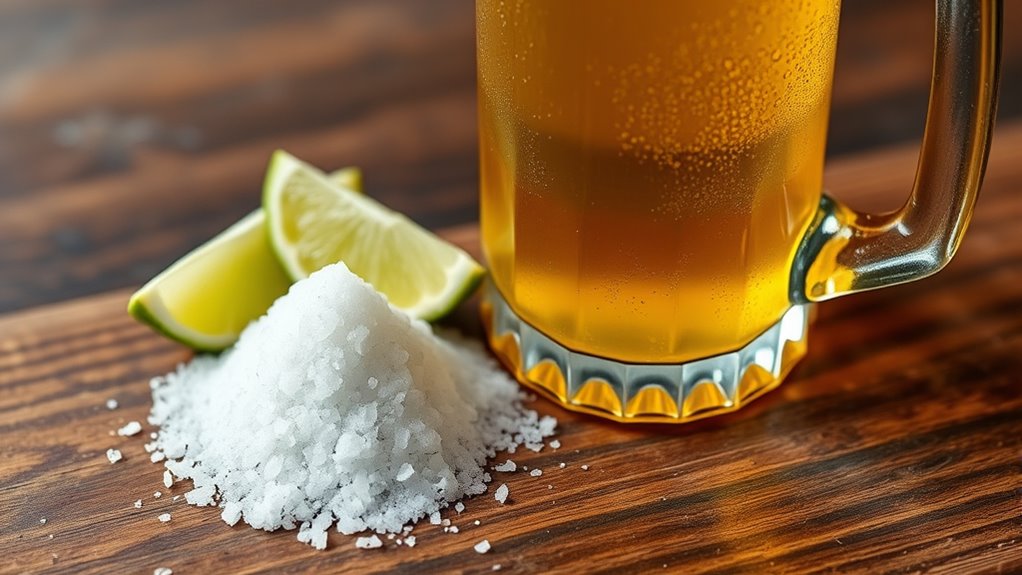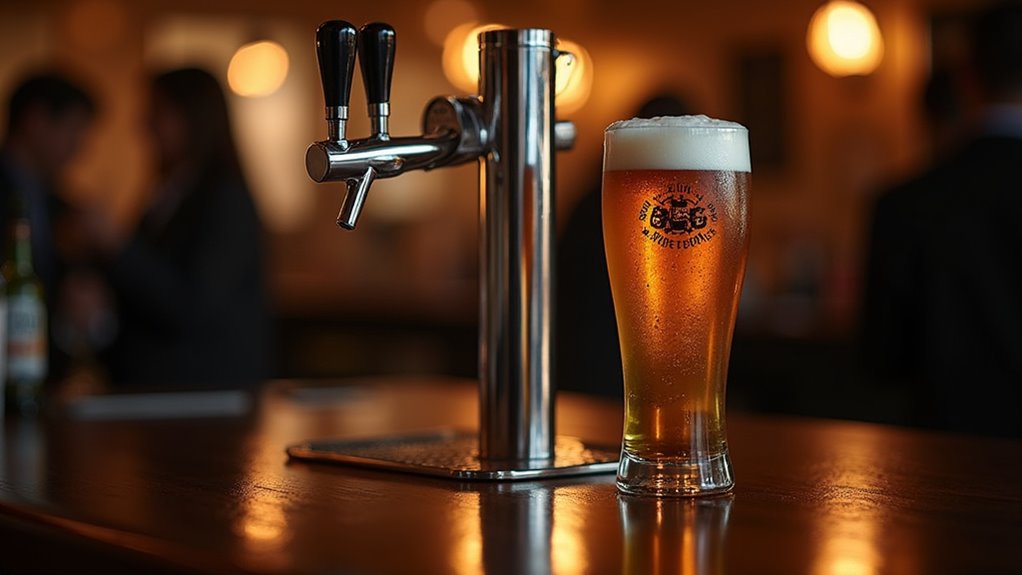Brew kettle temperature consistency matters because it directly impacts flavor extraction. Ideally, you should aim for a temperature range between 195 and 205 degrees Fahrenheit. This balance enhances sweetness and complexity while preventing bitterness or blandness in your brew. If the temperature fluctuates, you risk over-extraction or under-extraction of flavors. To achieve this, use precise kettles and regularly check the temperature. Understanding these principles can help you brew a better cup of coffee and improve your overall technique.
At a Glance
- Consistent brew kettle temperature ensures optimal flavor extraction, preventing under-extraction or over-extraction of coffee.
- Maintaining temperatures between 195 and 205 degrees Fahrenheit enhances sweetness, complexity, and mouthfeel in the final brew.
- Fluctuating temperatures can lead to undesirable bitterness or blandness, negatively impacting the overall flavor profile.
- Accurate temperature control allows for replicable brewing recipes, ensuring consistent results with each brew.
- Using precise measurement tools and techniques helps achieve a balanced extraction of flavors from coffee grounds.
The Importance of Temperature Consistency in Brewing
When brewing coffee, maintaining a consistent kettle temperature is essential for achieving the best flavor extraction. Ideal brewing temperatures range from 195 to 205 degrees Fahrenheit.
Consistency in water temperature helps dissolve oils, acids, and sugars effectively, enhancing sweetness and complexity. If your kettle temperature fluctuates, you might experience under-extraction or over-extraction, compromising your coffee’s flavor profile.
To guarantee stable brewing temperatures, consider preheating your brewer and investing in equipment that regulates temperature. This consistency allows for replicable brewing recipes, leading to clear tasting notes and a pleasant mouthfeel. Additionally, effective temperature management ensures optimal fermentation performance in beverages like beer, which parallels the importance of temperature control in brewing coffee.
Helpful Hints:
- Use a thermometer.
- Preheat your equipment.
- Invest in a temperature-controlled kettle.
How Temperature Affects Flavor and Aroma
Understanding how temperature affects flavor and aroma is vital for brewing high-quality coffee. Brewing temperature, ideally between 195 and 205 degrees Fahrenheit, guarantees balanced extraction of flavors.
If your temperature is too high, you risk over-extraction, leading to bitterness. Conversely, lower temperatures may leave desirable solubles behind, resulting in a bland brew.
Additionally, the coffee grind size can influence how temperature matters; finer grinds extract quickly while coarser ones need more heat. Consistency throughout the brewing process is important, as even slight temperature fluctuations during transfer can alter the flavor profile greatly.
Helpful Hints:
- Monitor your brewing temperature.
- Experiment with grind sizes.
- Maintain a consistent brewing environment.
Understanding the Science of Extraction
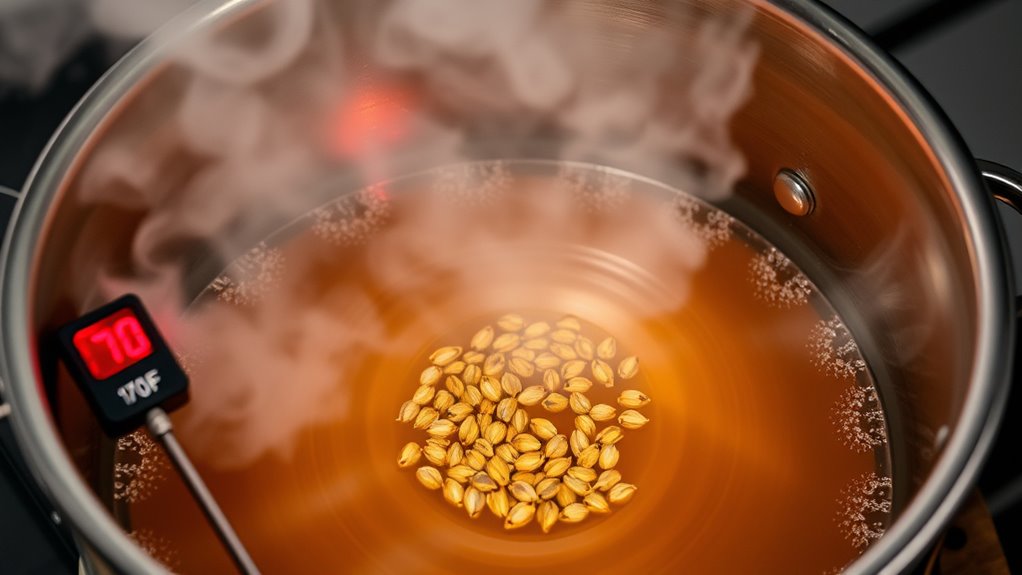
The science of extraction plays a pivotal role in brewing coffee, as it determines how effectively flavors are drawn from the coffee grounds.
The extraction process is crucial for unlocking rich flavors from coffee grounds during brewing.
Maintaining a consistent kettle temperature, ideally between 195 to 205 degrees Fahrenheit, is essential. This range balances extraction, enhancing flavor while preventing bitterness or blandness.
Remember, higher temperatures can over-extract undesirable flavors, while cooler temperatures may yield weak brews. Using finer grinds? Consider slightly cooler water to avoid over-extraction.
By utilizing temperature settings or a digital thermometer, you can guarantee ideal brewing.
Helpful Hints:
- Monitor your kettle’s temperature.
- Adjust grind size for flavor balance.
Methods for Measuring Brew Kettle Temperature
Measuring brew kettle temperature accurately is crucial for achieving the ideal extraction of flavors in your coffee. To guarantee balanced extraction, maintain a temperature between 195 and 205 degrees Fahrenheit.
Use a digital thermometer or a kettle with temperature settings for precise monitoring throughout the brewing process. Remember to cool boiling water for 30 seconds to a minute before brewing, which helps prevent scorching.
Preheating your brewer minimizes temperature loss, keeping water within the desired range. Finally, regularly calibrate your measuring equipment; small variations can greatly impact your coffee’s flavor profile.
Helpful Hints:
- Invest in a quality thermometer.
- Always preheat your equipment.
Common Temperature Control Techniques
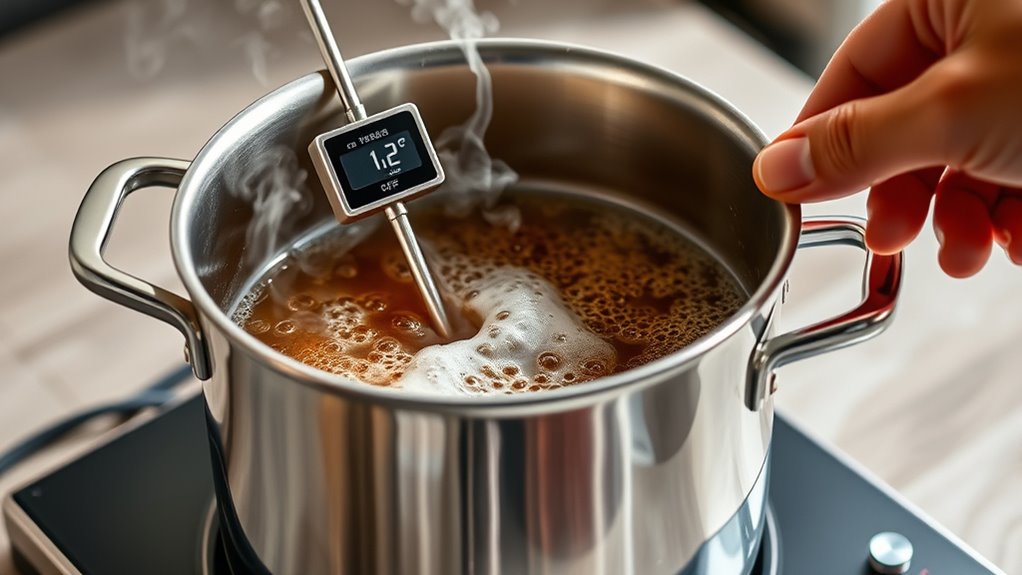
When you brew coffee, maintaining consistent temperature is key to achieving the best flavor.
Here are some common temperature control techniques:
- Use an electric kettle with precise temperature settings to guarantee accuracy.
- Preheat your brewer to minimize heat loss during the brewing process.
- Start with a higher temperature around 210°F, allowing it to cool to the ideal range of 195°F to 205°F.
Impact of Temperature Variations on Brew Quality
Temperature variations during brewing can considerably impact the quality of your coffee, affecting everything from flavor to aroma.
Maintaining a consistent brew kettle temperature between 195 and 205 degrees Fahrenheit guarantees ideal extraction. Inconsistent temperatures can lead to weak, bland coffee or, conversely, over-extraction, resulting in bitterness.
Additionally, variations affect Total Dissolved Solids (TDS), which influence the strength and mouthfeel of your brew. To achieve balanced flavors and enhance water quality, focus on precise temperature control and avoid scorching coffee grounds.
Helpful Hints:
- Monitor your brew kettle temperature closely.
- Experiment with different temperatures for flavor profiles.
